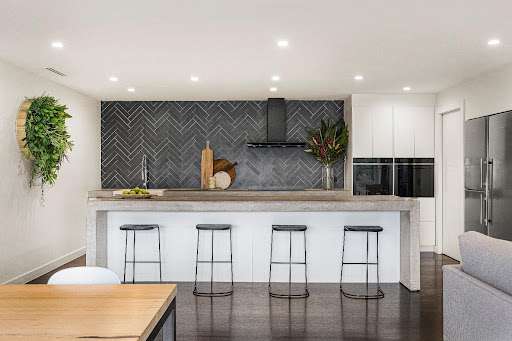The kitchen is now one of the most important rooms in any home, and a good quality kitchen is top of the list for most house hunters. We all know what we want our kitchens to look like now, but the design of them has changed significantly over the years. New styles, materials and technology have completely transformed the look of most kitchens, making the rooms of the past seem almost recognisable.
In this article, Tara Neil, kitchen ashowroom in Reading takes a look at how the design of the kitchen has changed throughout time and makes a few predictions about what we expect to see in the kitchens of the future.
1950s
As much of the 1950s focused on leaving the darkness of the war behind, there was a noticeable injection of colour into most kitchens around this time. They tended to be bright spaces, making use of pastel colours throughout the steel cabinets, the tiles and the paint.
Most kitchens now had unified cabinets with Formica countertops that were finished with metal binding. Appliances also came in a multitude of colours in order to match the cabinets.
Many of the appliances had a bubble shape to them, and styles could vary wildly from sleek and modern to country cottage style. Geometric design was also popular, so checkerboard linoleum was all the rage.
1960s
The theme of colour continued through the 1960s, with everything from bright orange to lime green being in fashion. As lifestyles were now changing and there was a bigger focus on entertaining, it became important to use every inch of space wisely, and so functionality became a big feature.
Whilst many kitchens still favoured wood, there was an increased use of stainless-steel appliances. Kitchen islands now became more popular as open plan layouts meant that kitchen and dining areas were beginning to merge.
1970s
The 1970s saw colour starting to depart from our kitchens, and earth tones began to take its place to encourage a sense of relaxation. Families were brought together for dinner in 1970s kitchens and colours like gold and avocado green were coupled with natural wood in almost every aspect. Floral and geometric wallpaper also became a common feature, and floors and walls very rarely matched.
1980s
During the 1980s, colour schemes became lighter and cleaner, with a lot more white being used. Laminate proved to be a popular material, and so white cabinets all boasted a wooden trim. Countertops were made from ivory Formica, white tiles or butcher block Formica, and the U-shape became popular as a kitchen layout to increase counter and cabinet space.
1990s
The minimalist trend continued in the 1990s, with light oak finishes and all-white appliances. Many of the things typically found on work surfaces of the past were put away, and pastel paints and floral wallpaper became a popular way to create countryside charm. Kitchen lighting took the form of box lights or single overhead lights and islands once again made a comeback.
Modern kitchens
The kitchens of today aim to mix functionality with a space for entertaining and togetherness, so many are open spaces. There are large windows and lots of lighting, with straight lines and minimalist design. Some kitchens do now opt for a splash of colour with bold blues and greens for cabinets, or simply sticking to accent features.
We have uncluttered counters, bar seating and stainless-steel appliances to give a sense of a kitchen that may not date as quickly as its predecessors. Kitchens are now more likely to be light and open spaces to ensure that they remain the heart of every single home.

